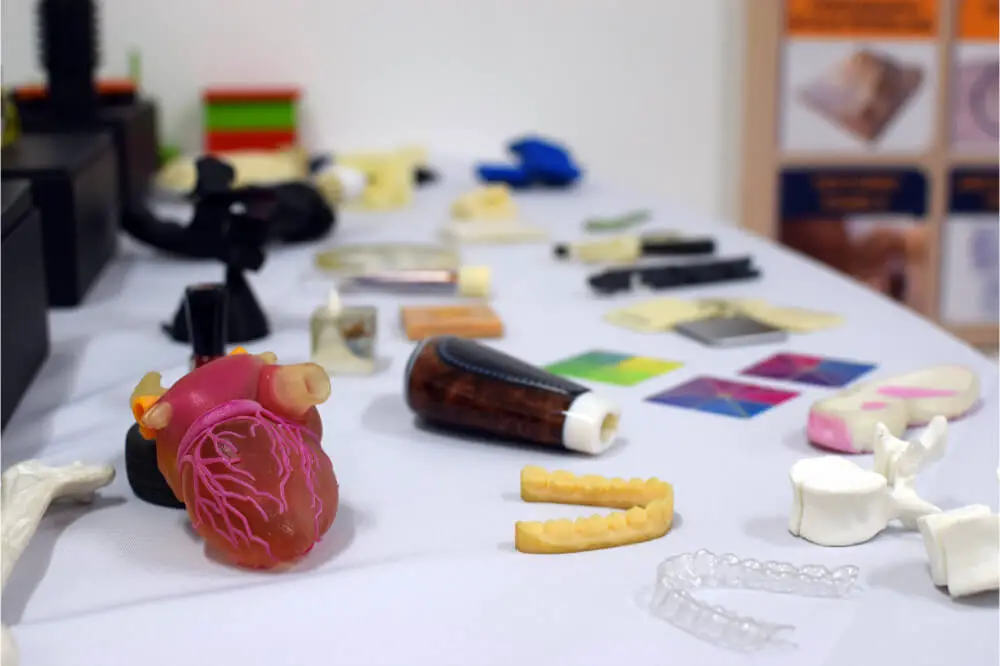The reason people like science…
Technology, especially, is always changing and creating new things to help society. They love the way that technology has changed the 20th century world from old fashion methods and tools to space age items that make life easier to live.
One of those changes is in printing. Gone are the days of moveable type pacing ink on a piece of paper. That technique is replaced by 3d printing that creates objects to save money, allow for innovation and explore new worlds
To learn about the latest 3D technology change, just continue to read our article. It has the information on the most recent change in this printing option.
What is silicone?
This chemical compound has been around at least since 1901. It is made up of silicon, carbon, hydrogen, oxygen, and perhaps other kinds of atoms as well and is used in a variety of man made products.
For example, sealants, adhesives, lubricants, medicine, cooking utensils, and thermal and electrical insulation as well as construction projects and breast implants and more. Its texture is rubber like and it is usually colorless.
Some of its main functions is to form a mold in which other materials are poured into it and left to harden. But it will seal windows, RV tops, and other areas where moisture will get inside.
Printing it has provided quite a challenge to researchers.

Can 3D printers print silicone?
It seems that the challenges stopping 3D printers from creating silicone have been overcome. It has only been recently that one company announced that its printer can print silicone and make the result very useful
Right now the main use for printed silicone is reserved for medical purposes. But other companies have jumped on this bandwagon and started making silicone print objects for other industries.
- Medical industry– organ implants for ears, etc., as well as for medical instruments
- Automotive industry- key parts that need flexibility as well as strength
- Consumer products industry- common people can take advantage of the different printed silicone products that last longer and saves them money
The positive properties of printed silicone
Every man made object comes with properties that make them ideal devices or tools, etc., for specific tasks and duties. Silicone has many such properties that allow it to be used in a variety of instances that help people complete their objectives:
| Property | Explanation |
|---|---|
| Flexible & elastic | This means it is not going to be brittle and fragile and you can use it in numerous spots that require some movement |
| Stands up to high pressure | Heavy weights do not bother it and it does not come apart when the pressure is turned up |
| Heat resistant | Lets you apply it in places where high temperatures exist without damaging the repair of the silicone |
| Non-conductive | You won’t get an electric shock when using it around electrical appliances, wiring or other electrical implements |
| Bio-compatibility | It can be used inside the body and it won’t spread any toxic chemicals. Nor should it be rejected by the body |
Some negatives for printing silicone
As usual, there are some cons to printing silicone and those follow:
- It remains a solid material- once silicone has hardened into its final shape, you cannot return it to its liquid form.That means once a mistake is made, your project may be ruined as it cannot be corrected
- Special equipment is required- there is no getting around this either. Silicone liquid won’t work with normal filament extruders. The good news that other 3D materials need the same equipment so that is easy to get
- Takes longer to finish a project- if you are in a hurry and have a deadline, avoid using silicone. It will take longer to complete your work
- It does not do multiple objects- using silicone in the 3D printing process means working doing one item at a time. No mass production here
- Lack of documentation- that means that this development is so recent, there is very little printed to help you when mistakes happen. There is some but not a lot
2 words of warning about silicone printing products
- Silicone filaments and resins are not on the open market as of yet. The companies that have developed the printers, etc., are not manufacturers
- Any silicone filaments and resins marketed online are not real. Those are fake products to get you to spend your money for something that is not available yet
**If you want to print in silicone, you may have to find a silicone printing service to do the job for you. All you will need is an STL or OBJ file and the service produces the silicone design guide to make sure you do not need to make any modifications. To get a quote you may have to upload the file to the company
Shopping for a 3D printer that uses silicone
If you can find them for sale here are the components you will need to make your silicone printing produce great results
| Accessory | Explanation |
|---|---|
| Inkjet extruder | This moves the silicone to the build base and shapes your design |
| Internal warmer & pump | Silicone needs to be a liquid to work. These tools heat the product and help move it along |
| Short, straight pipeways | This helps the material flow better and evenly.Silicone should travel the shortest distance possible |
| Glass enclosed printer bed | This is needed for the vulcanization of the object when it is done. UV rays go over the material and hardened. This is vital if you are going to do the project right |
Some final words
Silicone printing is so new no one has a complete picture on how to use it or what issues may need to be fixed. This may take time to get the body of knowledge on this new 3D printing style larger and more informative.
One thing is for sure, it may be a better way to print your 3D objects because of the versatility of silicone and its strength.


